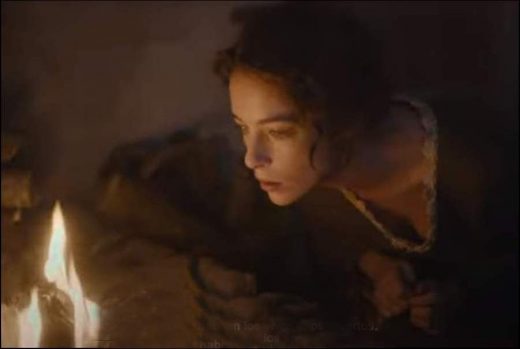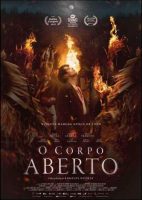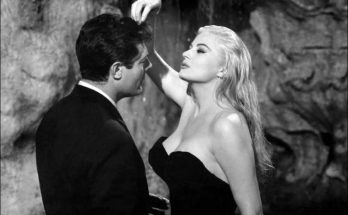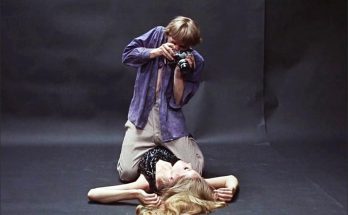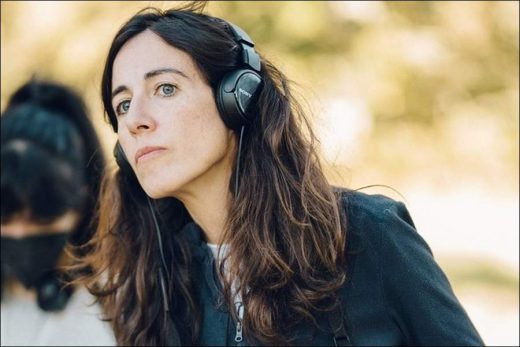
Ángeles Huerta talks her new gothic tale “The Open Body”. A school teacher arrives in a remote Galician village steeped in deeply rooted traditions and legends… Much like a Gothic tale, this is how The Open Body begins, a mystery film directed by Ángeles Huerta after her first documentary feature, Esquece Monelos (2017). Starring Tamar Novas, Victória Guerra and María Vázquez, this Spanish-Portuguese co-production hits Spanish movie theatres on 9 December, courtesy of Filmax, after it took part in festivals of the likes of Gijón, where we met with Huerta to talk about some of our impressions.
Beneath the sheen of this Gothic horror story, we can make out various messages being conveyed here.
Ángeles Huerta: Yes, the film is about how ridiculous boundaries and limits are when they restrain us and divide us on every level, whether it’s linguistically, or in terms of gender and sex. It would be better for us to embrace diversity because I can see that right now, various things are in a precarious situation, also in the cultural sphere.
It’s true that local stories like yours, which speak to the legacy of legends and beliefs, end up being universal.
Yes, but above all, the movie talks about the clash between a world that is deeply secular – that of reason – which drags us away from the spiritual and impoverishes us, and is lacking in reference points to enable us to confront many things, and another one that still clings to that spirituality.
The foggy border landscape goes a long way to creating the mysterious atmosphere of The Open Body.
The work of DoP Gina Ferrer is astonishing – she had a perfect understanding of what we wanted to convey here. She convinced us to focus our gaze on the characters: it’s a film about bodies, flesh and skin, using references such as Andrea Arnold’s Wuthering Heights, with everything in a format that’s framed more to home in on the human aspect.
The lands on the border between Portugal and Galicia are more open and are not as fenced in as they are in the rest of the region. Here, relationships are very different to the ones that exist in a closed-off, rationalised place. There’s a metonymy between the landscape and the bodies, both human and animal.
Your film also brings to mind the fantastical Spanish cinema from the 1970s, such as Pedro Olea’s The Ancines Woods.
The most pertinent Spanish reference is Rowing with the Wind by Gonzalo Suárez. In the movie, there’s not enough blood or gore to make it a horror flick, but that’s not how I envisaged it. Rather, I pictured it as a Gothic feature, as an exaltation of romanticism.
What drew you to the story that it’s based on (Lobosandaus by Xosé Luís Méndez Ferrín), enough for you to turn it into a screenplay?
There is a clear mechanism when making a classic genre film about possession, but it was the sensuality of the story that captured me, the boundless sensorial potential that was already in it. The film can have a queer interpretation in the way it reflects on gender as something performative. I love very passionate cinema!
You have helmed a fiction film and a documentary. Which kind do you feel more comfortable with?
They are both a response to a radical need to tell a story because that’s how independent film works. You dedicate so much time to it, and that’s why it has to represent something of great importance for an individual on a personal level. Esquece Monelos stemmed from an important moment in my life that I was going through and The Open Body from a different one.
Documentary is the freest of all genres, where everything is allowed and you can play with many forms. Fiction has rules, and genre has its own, but fables have something magical about them. We have to bring people to the cinema from many different places, creating myriad stories, because we are a very diverse country.
In The Open Body, we hear a fascinating sentence: “We all believe what we need to believe.”
The film also talks about an extreme ability and need to create stories to explain the world: the main character has one tale and the town’s inhabitants have another, and perhaps the residents’ story is more likely to be able to decipher the complexity of the universe. Because sometimes, these archaic structures have the ability to assimilate behaviours running contrary to the norm into the system.
“The Stripe”, the border between Galicia and Portugal, is the setting for the film. As a co-production, you straddled that boundary.
Yes, of course, for the shoot. But in the story, the idea is that you shouldn’t know where you are: it’s a limbo between two countries, and between life and death.
Do you have any projects in the pipeline, be they fiction or documentary?
I think I’m going to stick with fiction and genre. It’s really captivated me!
The Open Body
O Corpo Aberto
Directed by: Angeles Huerta
Starring: Tamar Novas, Victoria Guerra, María Vázquez, Nicolás Otero, Elena Seijo, José Fidalgo, Federico Pérez Rey, Miquel Insua, Izan González, Ángel Dorado, Xabier Perdiz, Víctor Fábregas
Screenplay by: Daniel D. García, Angeles Huerta
Cinematography by: Gina Ferrer
Film Editing by: Sandra Sánchez
Costume Design by: Teresa Sousa
Art Direction by: Antonio Pereira
Music by: Mercedes Peón
MPAA Rating: None.
Distributed by: Filmax International
Release Date: September 10, 2022 (Portugal), September 25, 2022 (Spain)
Views: 239
